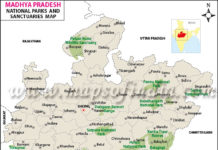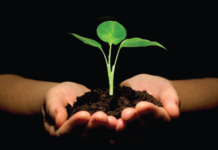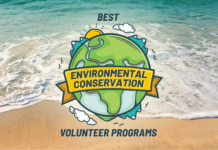Facts In Brief About Russia
- Area :- 17,075,200 Sq. Km.
- Population :- 14.44 crores (2019)
- Capital :- Moscow
- Currency :– Rouble
- Religions :- Christianity
- Languages :- Russian
- Government :- Federal Republic
- Per capita income :- 28,270 PPP dollars (2019)
Russia’s Flag
The Russian flag has simple stripes of white, blue and red. It was adopted in 1991. The Russian empire used the flag from 1699 to 1918 .

The state seal was adopted in 1993 . It includes symbols of the Russian empire.
Officially Russian Federation
Russia is world’s largest country, stretching over a vast expanse of eastern Europe and northern Asia.
Russia is bounded on the west by Finland, Estonia, Latvia, Belarus, Lithuania, and Ukraine (with the western exclave of kaliningrad oblast [Province] touching Poland) and its bounded on the south by Azerbaijan, Kazakhstan, Mongolia, China, North Korea and Georgia.
It faces the beltic and Black seas on the west, the Arctic Ocean and Conjointed seas on the north and the Pacific Ocean and conjoined seas on the east.
The capital is Moscow. area 6,592,800 square miles. The capital of Russia is Moscow.
Russia the world’s second largest power generating country, supply 67.77 per cent of its energy with fossil fuel, 19.49 per cent with hydroelectric facilities and 12.74 per cent from nuclear power.
Russia is one of the richest country in term of natural resources. It has the world’s largest forest reserve, enormous energy supply, vast stretches of farmland, extensive mineral deposit and many potential sources of hydroelectric power. Russia also has a wide variety of plant and animal life.
Heavy industry is the most highly developed the sector of the Russian economy. The machine building industry is concentrated in Moscow and st. Pittsburg, along the Volga River, and in the ural mountains.
It makes various types of tractors and heavy machinery and electrical equipments.
The chemical industry produces chemical fibres, mineral fertilizers, petrochemicals, plastics, soda ash and synthetic resins and different types of products.
Russia is one of the world’s major grain producers. However, the country still must import grains for food.
Major crops grown in Russia include Barley, flax, fruit, oats, potatoes, rye, sugar beet, sunflowers, vegetables and wheat.
Russian farmers also grow many fodders crops that is, food crops for animals. Grasses and corn are the most important fodder crops.
Moscow
The capital of Russia is Moscow.
Moscow’s Red Square at night :- Red Square has long been the centre stage of moscow life. It was the scene of ceremonies under the ruling stars beginning in the 16th century.

During the Soviet era, important state holiday such as may Day and the anniversary of the bolshevik revolution was celebrated here.
The “Red” in the name of Moscow’s Red Square comes not from colour but from the Russian word krasnaya, meaning beautiful.
In addition in the kremlin, the most notable structure bordering the famous care in the ornate and beautiful St. Basil’s Cathedral.
Arbat Street in Moscow
Narrow 19th century Arbat street has long been a gathering place for writer and artists in the Russian capital city of Moscow.
Located west of the kremlin, the pedestrian avenue is lined with shops and restaurants.
Monastery Town

Known as Zagorsk during the soviet era, the town’s name has reverted to sergiyev Posad in honour of Saint surgius, founder of Trinity Monastery around which the town original grew.
Trinity Monastery remains one of the Russia’s most important religious and historical sites.




